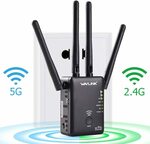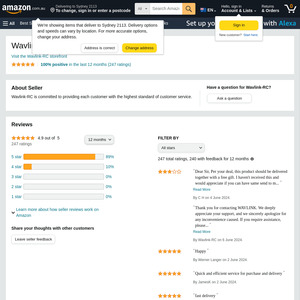Down from $72.99 as a Lightning Deal on Amazon AU. Presumably, it's model WL-WN575A3, and it is supported by OpenWrt.
Disclaimer: It's been sitting in my cart but I don't have intention to buy it anymore, so I cannot really comment on how good it is, or how well it runs OpenWrt. I was keeping an eye on it to use as a compact OpenWrt router, but I recently converted my home network to another OpenWrt-supported router, namely Ubiquiti EdgeRouter X.




 CamelCamelCamel
CamelCamelCamel

would advise against buying this unit, it constantly locks up, freezes and requires rebooting.